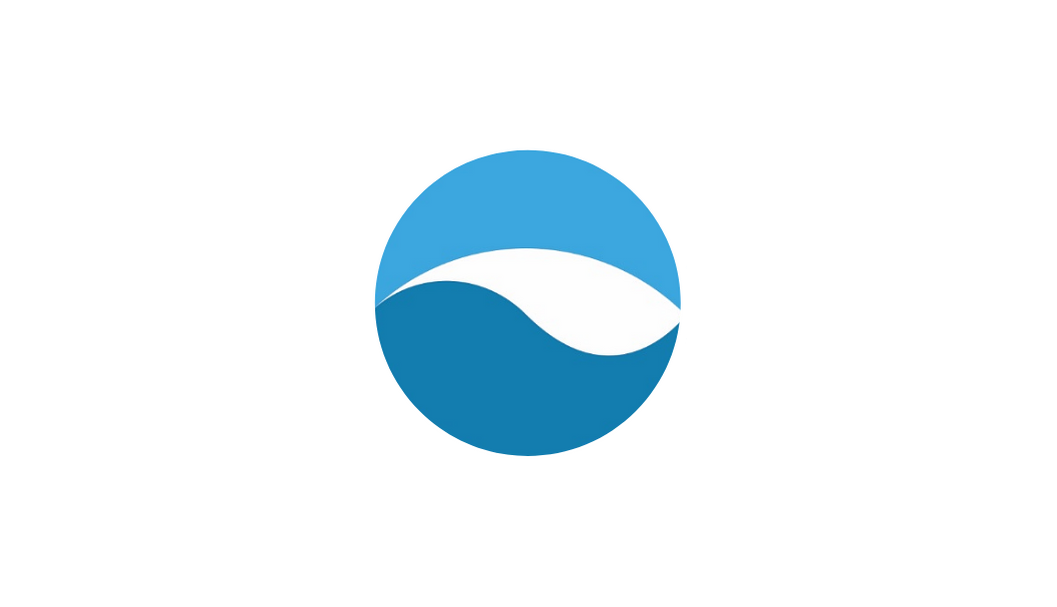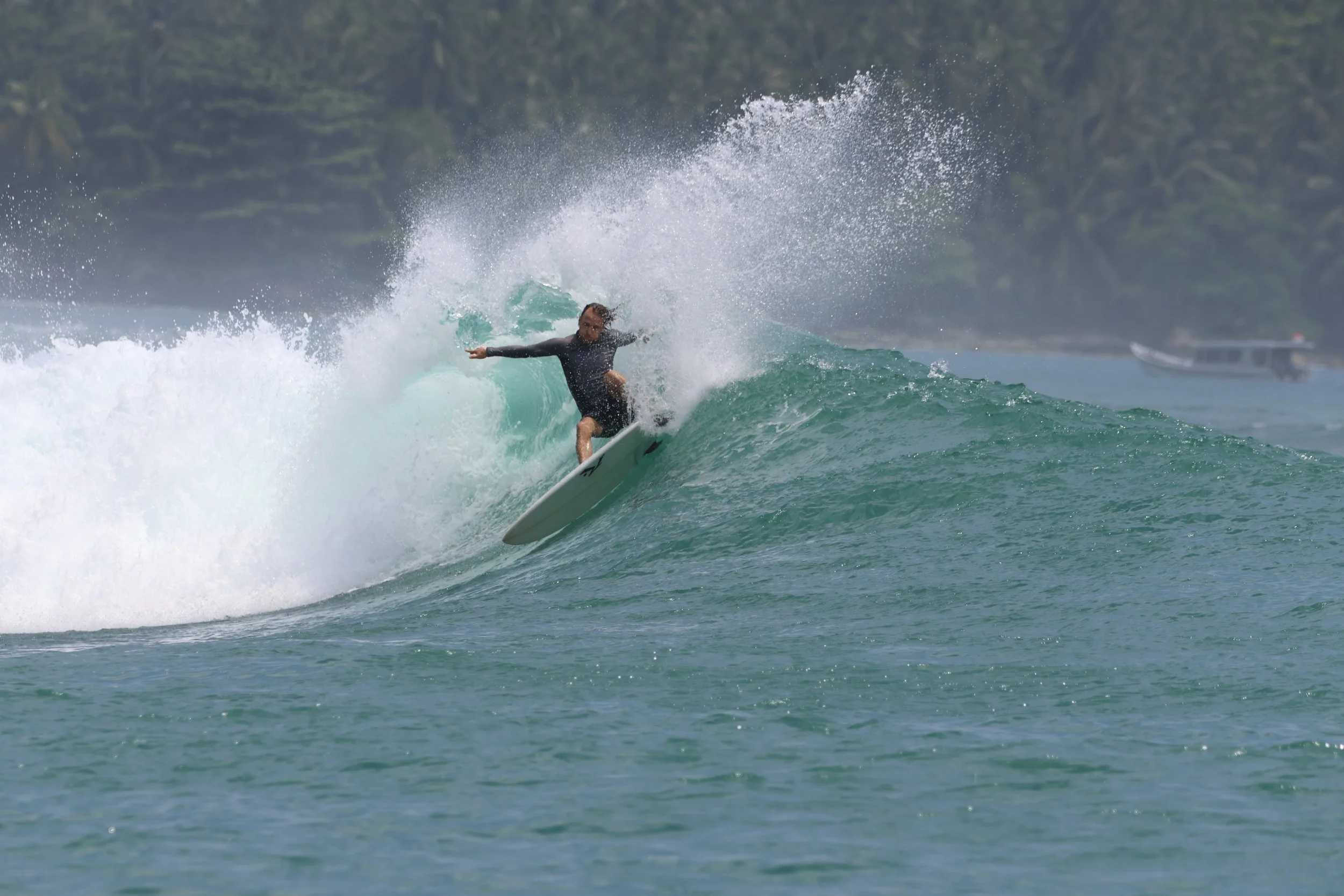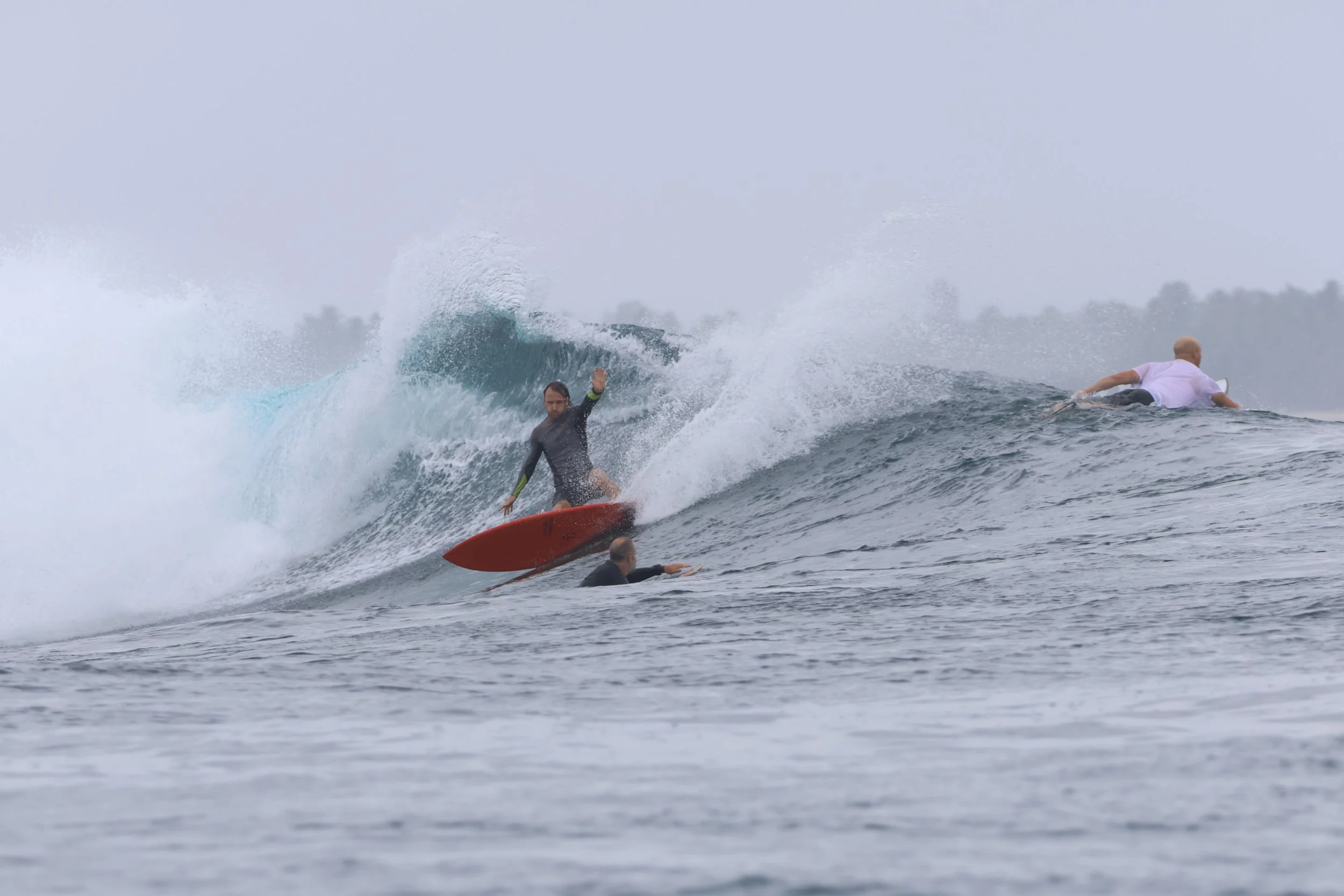After mastering the duck dive/turtle roll and the pop up, it's time to level up your game.
Next stop? It's not charging massive waves. It's not riding barrels. It's definitely not a rodeo flip.
It's about having as much fun as possible trying surf board tricks!
These tricks or manoeuvres are the next step in your surfing journey. And besides being insanely satisfying when you pull them off, they also add another challenge for you to overcome.
Below are a few surfing tricks you can try. They cover a range of skill levels from basic maneuvers to more advanced techniques. They’re also perfect for beginners looking to build confidence after catching waves independently and for intermediate surfers ready to take their skills to the next level.
Ready to start ripping?
This article is your golden ticket to the world of surfing tricks.
Why do we need an article on surfboard tricks?
Fair question.
While it's true that the only way to become a better surfer is to practice, practice, practice. It's also helpful to learn the theory behind the technique.
That's because while practice is crucial, knowing the why and how behind a certain move can greatly improve your execution.
Consider the difference between a surfer who just mindlessly goes through the motions versus one who understands the mechanics and purpose behind each move.
The latter is able to easily replicate their successful manoeuvres and troubleshoot any issues that may arise.
They also have a deeper appreciation for the sport and can better anticipate wave movements, making them more adaptable in different conditions.
What are the most common surfing tricks and key maneuvers?
The following maneuvers are essential for anyone learning to surf or transitioning into intermediate stages.
Basic
Duck diving
A technique for getting through oncoming waves by diving under them with your board—crucial for paddling out the back.
Bottom turn
Owner and head surf coach Bomber Johnston laying down a smooth bottom turn on a recent surf trip. 🏄♂️🌊
A fundamental maneuver that sets up all other moves. It involves turning at the bottom of the wave to redirect up the face or down the line.
Carve
Smooth, flowing turns on the wave face. Carving help you control speed, throw spray and setup for more dynamic maneuvers.
Advanced
Layback snap
A stylish, controlled turn where the surfer leans backward while snapping the board through a sharp direction change. One of the coolest looking turns, but difficult to ride out of.
Forgot your wallet? Pulling the classic Larry Layback – style and commitment in one smooth move. 😎🏄♂️
Roundhouse cutback
This move brings the surfer back toward the breaking part of the wave (the white water), then rebounds to continue down the line. Easy to do. Hard to do well.
The roundhouse cutback – stylish and functional, just how we like it. 🔄🏄♂️
Floater/foam climb
Used when a wave is closing out or breaking in front of you. The surfer rides up the broken wave (foam) and transitions back onto the face, extending the ride.
Off the lip/snap
A maneuver where you turn sharply off the wave’s lip. It’s a solid stepping stone into a more vertical style of surfing.
How can I improve my odds of completing a manoeuvre or trick?
Three of the biggest keys to pulling off tricks and maneuvers are:
Riding the right board for your skill level
Choosing the correct waves
Learning how to generate and maintain speed
Mastering these skills will dramatically boost your success rate, allowing you to land tricks with style and precision.
In this guide, we break down the essentials—choosing the perfect board, wave selection and speed generation—so you can execute your moves like you've been surfing for years!
Tip 1: Riding the right surfboard
Your board plays a huge role in how easily you catch waves and progress your skills.
For beginners and those working on basic tricks, go for a board with plenty of volume—a longer foamie is ideal for starters. It’s stable, forgiving and makes it much easier to reach the lineup, pop up and stay balanced.
As you improve and start attempting more advanced tricks, you’ll want to transition to something shorter and more maneuverable.
A smaller board allows for quicker turns, sharper maneuvers and better control in steep or fast waves. Don’t rush the switch!
Make it when your skills are ready. You’ll progress faster and more confidently. Resist the urge to go short and skinny at the start though.
Stick to a beginner surfboard.
Tip 2: Choosing the correct waves
No matter how good your technique is, picking the wrong wave can stop your ride before it starts.
Look for clean-faced waves with a consistent, peeling line.
These offer the space and shape needed to build speed and perform. Avoid waves with impending closed-out sections that break all at once. Go for waves that form a steep but surfable wall instead.
The key is to identify steeper waves with power (but not so vertical that it shuts down fast).
Pay attention to where other surfers are having success. Watch for waves that hold their shape longer.
Matching wave selection with speed control is what transforms a simple ride into a standout one. Which brings us to our next point.
Tip 3: Gaining and maintaining speed
Speed is your foundation. It lets you stay in the energy zone (aka pocket), flow down the line and perform turns and tricks on the steep slope of the wave fluidly.
To gain speed, start with a strong bottom turn, keep high on the wave face and use a smooth pumping action to drive forward. Taking off at an angle also helps carry momentum right from the start.
Losing momentum is normally the result of a board that's too small or a wave that's too full or fat. At all times you want to ride the "surf line". This is the optimal path on the wave that allows for maximum speed and manoeuvrability.
Where should I surf to practice these maneuvers?
Progressing in surfing means gradually challenging yourself in different conditions. And choosing the right spot at the right stage is key.
Whether you’re working on basic surfing skills or attempting your first aerial maneuver, finding the ideal location will set you up for success.
For beginners or those practicing basic surfing moves:
Look for beaches with small waves, soft take-offs and sandy bottoms
These offer a forgiving environment to develop your pop up, turns and get a feel for the wave’s curl and lip of the wave
The wave’s pocket in these conditions tends to be more mellow, making it easier to focus on maintaining balance and carve carving as you progress
As your surfing experience grows, you can begin testing yourself in slightly steeper conditions, for example:
Intermediate surfing spots with more defined shoulders allow you to link moves together and build more speed through the pocket of the wave
These are perfect for developing flow and control
This is especially important when preparing for tail slides or vertical hits off the lip
For advanced surfers and those looking to practice challenging tricks, this is what it's all about:
Steep waves provide the power and shape needed to attempt tube rides and advanced maneuvers like an air reverse, alley-oop or even rodeo flip
These waves often demand maximum speed, awareness of wave conditions and a strong sense of timing, especially when involving launching into mid-air rotations
Booking a dedicated surf lesson with a trusted school will speed up your progression.
The right teacher or coach can take you to spots that boast consistent, high-quality waves that cater to both intermediate and pro levels.
Just remember: start where you’re comfortable and build up gradually. Even experienced surfers benefit from remembering the basics now and then!
Surfing tricks and tips FAQ
Q: What’s the best way to learn surfing moves?
Start with basic surfing moves like the bottom turn, foam climbs and cutbacks. Mastering these helps you build speed and positioning before moving into more complex maneuvers.
Q: What makes something an ‘ultimate surfing trick’?
That depends on the surfer! For many, the craziest surfing tricks are an air reverse, flynnstone flip or kerrupt flip. These require insane amounts of skill, control and often maximum height during the aerial maneuver.
Q: When should I transition to advanced tricks?
Once you’re consistently controlling your board, managing wave conditions and maintaining speed through turns and transitions, it’s time to test advanced moves.
Q: How important is foot placement?
Very! Your front foot helps with balance and landings while your back foot controls speed and direction.
Q: Do pro surfers still practice basics?
Absolutely. Even a pro surfer revisits foundational skills regularly to sharpen timing, improve flow and keep their technique dialled in.
Q: Can I do tricks in small waves?
Yes, but some tricks—especially those that involve launching into the air—are easier in more powerful waves. Still, small waves are great for refining technique and building toward bigger maneuvers... so long as the waves have enough power to push you down the line.
Q: What helps me get more power in tricks?
Generating maximum power often comes down to proper positioning in the wave’s pocket, hitting sections with speed, and timing your release off the lip. Training on a variety of waves will improve this naturally.
Q: What’s a good first aerial to try?
The straight air (no grab or spin) or alley oop are basic entry points for many surfers aiming to try aerials. Just make sure you’re already comfortable with launching into the air and surf riding in steeper conditions.
Final thoughts
Performing tricks is a fun way to take your surfing to the next level and challenge yourself in the water.
While it may seem intimidating at first, don't freak out!
Recall all the times you thought something was impossible and then you finally did it. Push yourself. Prioritise safety. Learn with experienced surfers. Most importantly though... enjoy the process!
A rough day in the water is better than a good day at the office or on site, right?


















